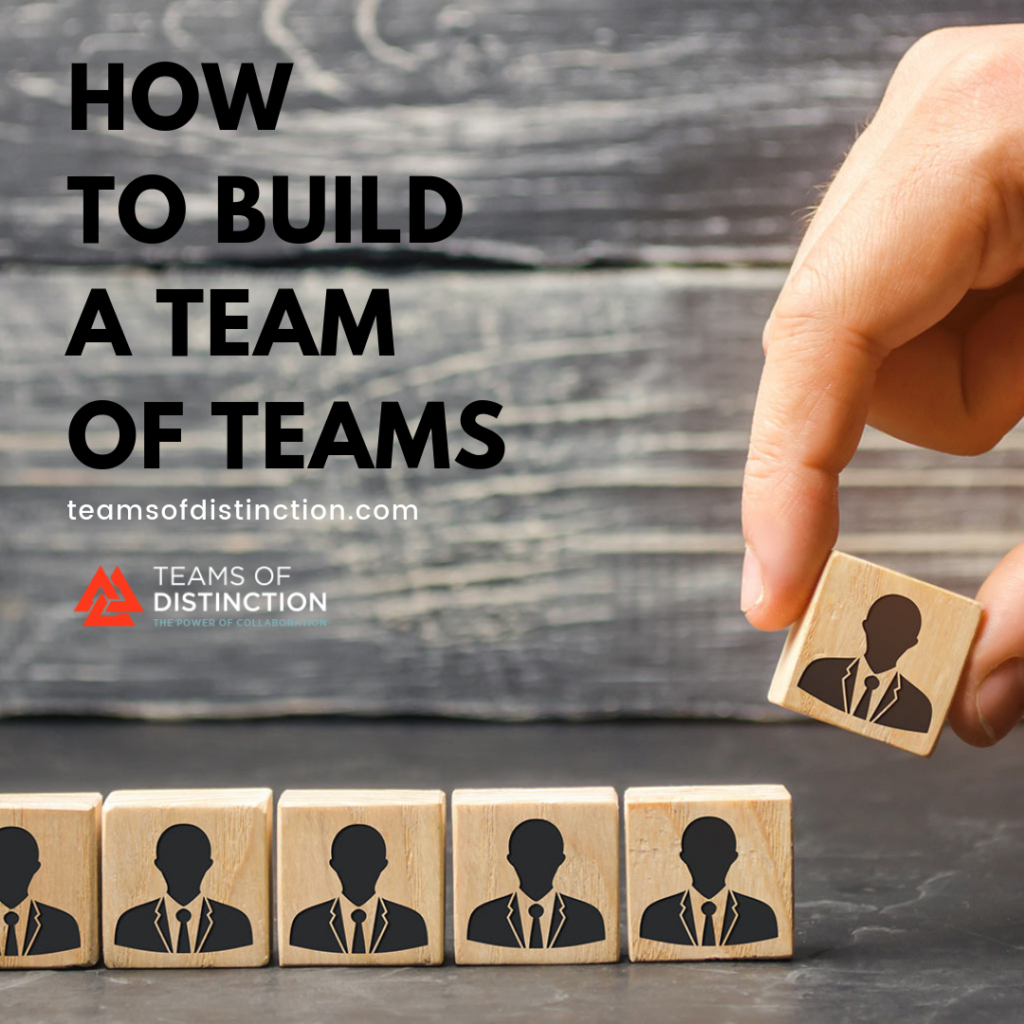 Are you part of a team of teams? – Probably, without even knowing it. Once you are moving up the hierarchy and are in charge of multiple teams, you are creating a team of teams universe.
Are you part of a team of teams? – Probably, without even knowing it. Once you are moving up the hierarchy and are in charge of multiple teams, you are creating a team of teams universe.
The term “team of teams” has gained new traction since retired US Army General Stanley McChrystal published his book titled Teams of Teams: New Rules of Engagement for a Complex World in 2015. General McChrystal was not the first to use the term. For instance, Bill Drayton in the 80’s started experimenting with an organizational model he called “A Team of Teams World.” *
One of today’s leadership challenges is optimizing the collaboration of multiple teams in often a global, diverse, and predominantly virtual environment. For too long, much of the team-building related discussion has centered around how to make a team work within itself. And yes, that’s important! But where a company differentiates itself is by creating an environment where teams are collaborating seamlessly with each other. Those teams can belong to the same company, reporting to the same “big boss,” or they could be a composite of multiple teams from different companies fulfilling a joint task.
To be able to compare teams with each other, to understand why some are collaborating better than others, and to highlight where improvement between teams can be made, we have conducted research and created a diagnostic to measure teams of teams. The model has five dimensions.
ALIGN: Strengthen alignment of mission, goals, roles and responsibilities.
ACT: Create a culture of accountability.
COMMUNICATE: Establish open and productive meetings and communication channels.
RELATE: Build a supportive team community that celebrates success and proactively helps others.
IMPROVE: Resolve conflict positively and promote self and team improvement.
While “Align,” “Act,” and “Communicate” may make intuitive sense, here are a few thoughts regarding “Relate” and “Improve” and how they impact the “team of teams” concept.
When talking about an exemplary entrepreneur or CEO, we envision somebody who is regularly walking through his/her facilities, talking to people and connecting with his/her staff. The same rule applies to teams: If you want to create a top team of teams, you want individuals of each team to relate with each other. Individuals within those (multiple) teams have to be connected, know each other, understand where they are working and what their respective environments look like, and get “a feel for their colleagues.” They have to visit.
Example: outsourcing – If you have offshored part of your production and want to have a productive working relationship with your supplier(s), you have to go there. Not necessarily all team members, but multiple team members. Make sure people get enough time to get to know and appreciate each other.
Example: merging companies – Encourage people to visit each other. People who know each other and have met physically in their respective locations will collaborate better. This should happen not just once, but in regular exchanges. You can assign single team members to work for a time period at another location or have one representative present in person at critical milestones. You have to be flexible and find out what works best for you and your teams. And one word of caution (or encouragement): Don’t try to save travel cost! Be generous, the investment you are making in relationship-building will pay back handsomely!
Joseph Conrad is credited with the quote “It’s only those who do nothing that make no mistakes.” Accordingly, in collaborative work, there will be mistakes. The specific collaboration danger for teams of teams is that out of fear, to “CYA,” for competitive reasons, or other motives, the blaming game starts between teams. Soon this will poison the team relationships. When the complaints about the other team(s) start to accumulate, take it as a warning sign! Well-functioning teams of teams expect mistakes. They have a continuous improvement process in place to learn from them. They acknowledge and address problems as they come up. They talk about how to make progress rather than complain about problems. They compare new methods with tried and true to find the most effective practices. They review their past actions to learn from mistakes. They proactively learn new information and skills and mutually coach each other across boundaries to make the teams succeed collectively.
Teams of teams are all around us. Technology has enabled their proliferation. And while this technology is an enabler, it is also a potential trap. To make good decisions quickly, address issues collaboratively, learn as an organization, maximize your innovative potential, and overcome mutual challenges across multiple teams within a company or between companies, the availability of technology does not replace multiple points of personal contact. This (unstructured) web of individual connections is what makes teams of teams successful!
* Fortune – May 30, 2018
“Team Of Teams: An Emerging Organizational Model”